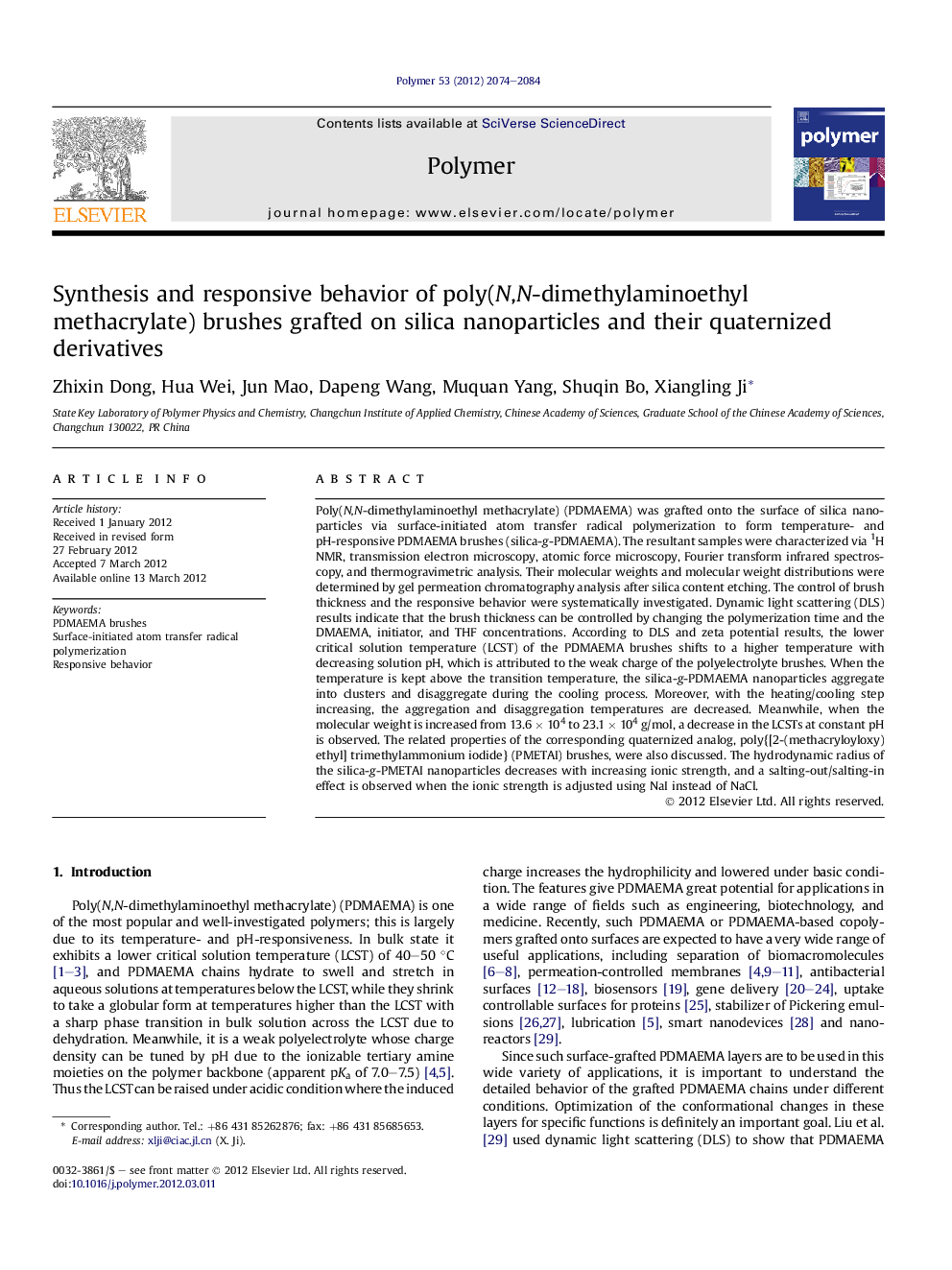| کد مقاله | کد نشریه | سال انتشار | مقاله انگلیسی | نسخه تمام متن |
|---|---|---|---|---|
| 5183721 | 1381026 | 2012 | 11 صفحه PDF | دانلود رایگان |

Poly(N,N-dimethylaminoethyl methacrylate) (PDMAEMA) was grafted onto the surface of silica nanoparticles via surface-initiated atom transfer radical polymerization to form temperature- and pH-responsive PDMAEMA brushes (silica-g-PDMAEMA). The resultant samples were characterized via 1H NMR, transmission electron microscopy, atomic force microscopy, Fourier transform infrared spectroscopy, and thermogravimetric analysis. Their molecular weights and molecular weight distributions were determined by gel permeation chromatography analysis after silica content etching. The control of brush thickness and the responsive behavior were systematically investigated. Dynamic light scattering (DLS) results indicate that the brush thickness can be controlled by changing the polymerization time and the DMAEMA, initiator, and THF concentrations. According to DLS and zeta potential results, the lower critical solution temperature (LCST) of the PDMAEMA brushes shifts to a higher temperature with decreasing solution pH, which is attributed to the weak charge of the polyelectrolyte brushes. When the temperature is kept above the transition temperature, the silica-g-PDMAEMA nanoparticles aggregate into clusters and disaggregate during the cooling process. Moreover, with the heating/cooling step increasing, the aggregation and disaggregation temperatures are decreased. Meanwhile, when the molecular weight is increased from 13.6Â ÃÂ 104 to 23.1Â ÃÂ 104Â g/mol, a decrease in the LCSTs at constant pH is observed. The related properties of the corresponding quaternized analog, poly{[2-(methacryloyloxy)ethyl] trimethylammonium iodide} (PMETAI) brushes, were also discussed. The hydrodynamic radius of the silica-g-PMETAI nanoparticles decreases with increasing ionic strength, and a salting-out/salting-in effect is observed when the ionic strength is adjusted using NaI instead of NaCl.
Journal: Polymer - Volume 53, Issue 10, 25 April 2012, Pages 2074-2084